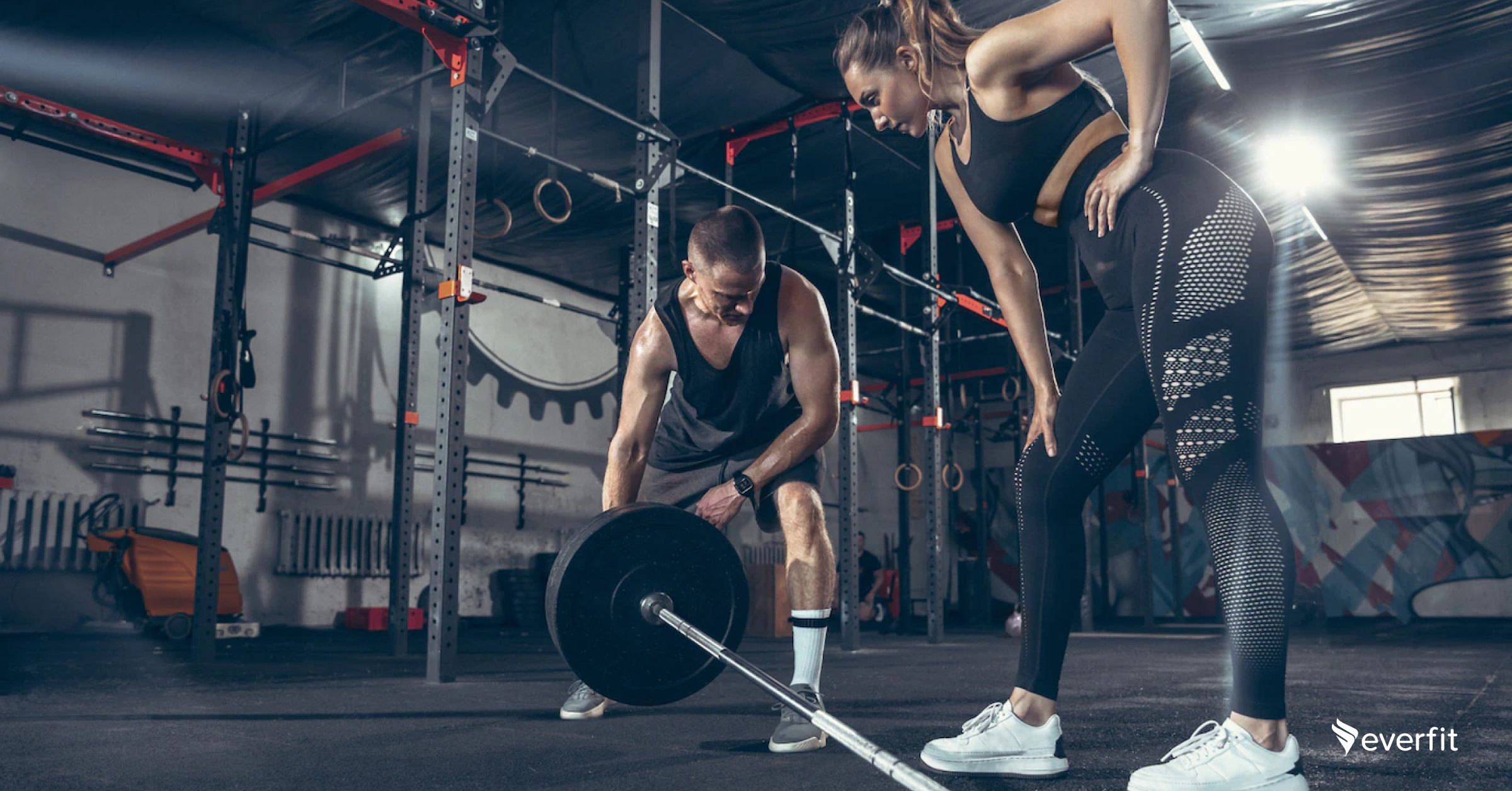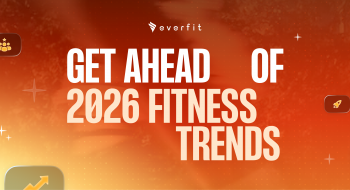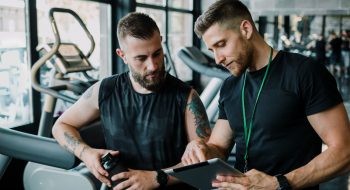Launching a monthly subscription model can be one of the smartest moves you make as a personal trainer. It gives you the ability to grow beyond one-on-one sessions and create sustainable, recurring revenue.
There are infinite possibilities when it comes to offering online coaching packages. In this guide, we’ll walk you through everything you need to know to launch your own subscription coaching offer, from structuring your pricing, marketing your offer effectively, to setting up automated sales workflows.

Why Should Personal Trainers Switch to a Recurring Subscription?
A subscription model is a recurring payment system where clients are billed automatically (monthly or annually) for ongoing access to your coaching services.
For coaches, this is more than a predictable recurring revenue:
- Better planning: With a more accurate estimation, you can plan your strategy smarter, reinvest in your systems, and scale with confidence.
- Higher retention: Subscription-based fitness programs shift the trainer-client relationship from “per hour” to long-term progress. You’re not just delivering a workout but continuous support, exclusive content, accountability, and habit coaching. When clients feel supported month after month, they’re far more likely to stay invested.
For clients:
- Ongoing training assistance and guidance on how to improve their lifestyles, eat better, and live healthier.
- On-demand access to quality resources anytime, anywhere.
- Flexibility to upgrade or downgrade their subscription as needed.
This model works especially well for online and hybrid training, where the value comes not just from live sessions, but from long-term progress, flexibility, and expert guidance.
How to Launch your Subscription Offer in 4 steps
There will be lots of work to do, I know. Following our checklist here to cover anything you need, in clear steps and a repeatable system.
Step 1: Find your niche
Weight loss and muscle gain groups can be a great start, but are very broad, and programming can be much more tailored for particular groups. For example, if some men prefer to lift heavy weights, target these men specifically with a weight loss program that promotes heavy lifting.
Once you sort it out, let’s define your subscription offer.
- Will this include custom or templated programming?
- Will I offer weekly, bi-weekly, or monthly check-ins?
- Is communication via chat or video calls? And where will it be (through a messaging app or a unified platform, like Everfit?)
- Think beyond workouts. What additional value can you bring? Meal plan? Recipe? Habit coaching? Wellness support? Community challenge? Or on-demand healthcare resources?
Step 2: Structure your pricing
Here are some most common subscriptions for fitness coaches:
Flat rate subscription
What you do: Offer one simple plan for all clients at a fixed monthly rate.
Example: $129/month for workouts, meal plan, community challenges, weekly check-ins, and chat support. Updated monthly.
Best for: Coaches who are new to this model and want to test it out.
Tiered pricing model
What you do: This is the most popular option as it offers variety based on how personalized each program is. It also lowers the barrier, allowing the client to go for an affordable option to test your services before a longer commitment.
Example:
| Tier | Price | What’s included |
| Essentials | $89/month | Workouts, meal plan |
| Advanced | $149/month | Workouts, meal plan, weekly check-ins |
| Exclusive | $199/month | Custom workouts, weekly check-ins, nutrition and habit coaching, and on-demand resources. |
Best for: Experienced online personal trainers.
Tips to set pricing that reflects your time and value
- Don’t underprice just because you’re coaching online.
- You can use your first tier as an anchor to increase perceived value for the middle tier. Reduce the pricing gap between the first and middle tier, but increase the gap between the middle and third one.
- To protect your revenue and discourage churn, you can offer month-to-month pricing with flexible cancellation or a more affordable 3-month locked-in.
- Test your subscription packages with a few loyal clients and adjust based on their feedback.
- Each personal training package or agreement has a contract, and so should your online training. Contracts guarantee income and a long-term commitment from both parties.

Step 3: Set up your delivery system
Unlike an in-person session, a subscription-based fitness program leans towards online touchpoints. Your delivery is their experience. Clients stay longer when your service feels professional and reliable.
Also, not all clients will join on the same day. David signed up on the first day of launching, but Emma may show up 3 weeks later, on a random Wednesday. Meanwhile, Paul, who lives in Canada, signed up to your program when it was 4 a.m. your time.
An automated system can help you work faster and respond more timely, whether it’s 5 clients or 50 clients. Personal training platforms like Everfit can automate all of this in a minute. After building your programs and subscription packages, you can set up an automated flow to send all this to your client once the payment is processed.
The best part? With Everfit, you can pre-schedule your messages and check-in forms, so you never miss one again, and your clients always get timely support.
Learn more:
- Autoflow Overview: How to automate your training business
- Introducing Sequences: an Automation for Payment & Packages
Step 4: Promote your subscription-based programs
There you go! Everything is set. It’s time to attract some clients.
To grow your fitness subscription, focus on three key areas: attracting leads, converting them into clients, and keeping them engaged long-term.
Start by identifying your ideal client and using content (training tips, client wins, short videos) to drive interest. Don’t limit your touchpoints to social media, but also meet them in their community or web search. Offer a free resource, like a 5-day workout plan, to collect leads and follow up with an email series.
Next, present your offer clearly: what’s included, who it’s for, and how it delivers results. Use a simple landing page, client testimonials, and limited-time incentives to encourage sign-ups.
Retention is the secret to stable income. Keep clients engaged through weekly check-ins, program updates, and habit tracking. Celebrate wins, offer occasional bonuses, and consistently deliver a professional experience.
You can easily set up a free trial offer on Everfit, or build a community to create a sense of belonging and competitive challenges!
Successful example of using a fitness training subscription
Rachel Henley, founder of Henley Fitness, successfully transformed her social media audience of 500,000 followers into a thriving subscription-based business using Everfit. She launched a free fitness program as a lead magnet, attracting over 150,000 downloads, then converted those leads into paying clients through a tiered coaching model:
- Tier 1: Low-cost app-based subscription for broad access
- Tier 2: Group coaching programs with higher touch
- Tier 3: Premium 1:1 coaching options for high-end clients
By automating onboarding, program delivery, and communication, Rachel scaled rapidly without sacrificing quality. Within just one month, she onboarded over 5,000 clients and significantly reduced her manual workload—saving more than 25 hours per week. Read more of her story!
How to upsell your online training as an add-on to in-person training
If you’re an online coach, expanding to a subscription-based training model won’t be hard. But for an in-person coach, this can be the real challenge.
I highly suggest simplifying your options for clients in the beginning.
Most clients don’t understand why they need online training when you’re here. Asking them immediately can lead to many ‘no thanks,’ so my suggestion is to offer a free week or two of online programming. Then, when you start discussing online programming, your client will be unaware of what that looks like or why it’s useful.

Start by onboarding clients on Everfit, where you can train up to 5 people for free! You could make the 2-week sample training that doesn’t have to be super custom. The point is to show the client the service you’re offering. Then, after two weeks, once they see the benefits, offer them the online training again.
Always use online coaching as a stepping stone. For example, you train with a client 3 times per week, instead of immediately going down to 2 sessions per week, offer 2 sessions + 1 day of online programming per week. I suggest not downgrading your price in this situation because you still should write the other two days of in-person training. Even though you’re theoretically offering just one extra programming day, explain that the cost is to help pay for the app and your time writing the program.
Promoting add-ons and subscription-based training
The options are limitless.
Specialize your offerings to clients, but make it very simple. For example, offer a muscle gain and weight loss program. If your niche is powerlifting, offer a squat program, a bench program, and a deadlift program. The idea is to provide something to supplement your client’s training, so they still have guidance in the gym. It saves your clients money and allows you to earn more.
Promotional strategies to get clients on any add-on or subscription-based programs should start with free trials. Then, have a consistent offer for clients, such as free two-week access to the program. Another way to promote the program will be to offer a 25-50% discount on their next month if they refer a friend to the program. You could also use the program to run challenges. For example, if you have a powerlifting-based squat program, offer a prize to whichever client improves their squat the most after 12 weeks.

Provide value
A subscription-based coaching model is one of the most powerful ways to grow a sustainable, flexible, and scalable online fitness business. With the right systems in place, you can deliver high-value coaching, create consistent income, and support more clients without burning out. Whether you’re just getting started or ready to scale, Everfit gives you all the tools you need to automate, engage, and thrive. Start building your subscription fitness training model today and turn your expertise into a predictable, profitable business.















